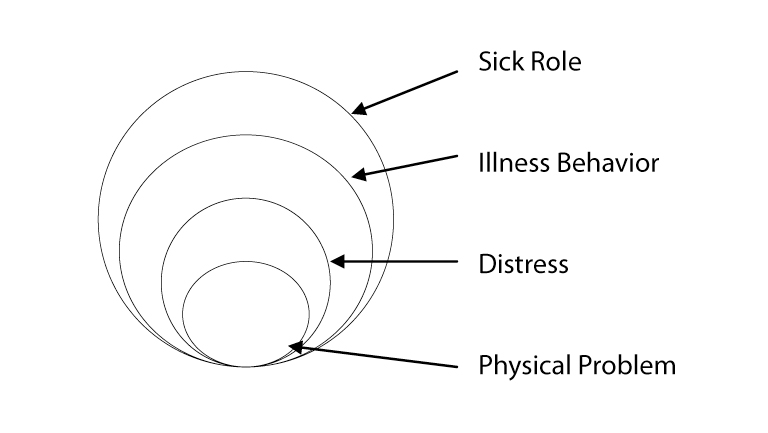Fuente: An Anesthesiologist's Approach to Vulvar Pain.
« Descargar documento (formato PDF) »

Repetitive noxious stimulation leads to gradual increase in perceived pain. Slow temporal summation mediated by C fibers.
Recognizing the need for an updated classification, the 1999 World Congress of the International Society for the Study of Vulvovaginal Disease (ISSVD) convened a discussion group to update classification of chronic vulvar pain. The discussion group focused on the illdefined category of chronic vulval pain without visible dermatosis and proposed the term "Vulvar Dysesthesia, (vulvodynia)" for this category. Vulvar Dysesthesia was further divided into" generalized" and "localized" types. "Localized vulvar dysesthesia" was synonymous with vulvar vestibulitis syndrome and included vestibulodynia and clitorodynia. Due, in part, to the lack of agreement about the presence of classically defined inflammation, the 1999 World Congress of the International Society for the Study of Vulvovaginal Disease (ISSVD) proposed to change the term "vestibulitis" to "vestibulodynia".
Vestibul – "itis" or "odynia"?
The formerly used term "Vulvar vestibulitis" lost favor because, an inflammatory pathogenesis is considered controversial, based upon the poor correlation between vestibular pain and classical inflammatory infiltrate. In spite of reports of severe pain, significant number of biopsy specimens of the vulvar vestibule displayed only mild inflammatory infiltrate, see Table 1. In reports comparing pai-free controls and VVS-afflicted cases, the degree of inflammatory infiltrate was often similar.
Table 1. Summary of histopathology in VVS surgical cases and pain free controls with respect to degree of inflammatory infiltrate in the vulvar vestibule. Evident in the more recent two reports, mild and severe inflammatory categories are similar between VVS cases and pain-free controls.
Changes initiated in 1999 have continued to evolve through the following two ISSVD Congresses and have culminated in the present classification (2003). A useful classification of chronic vulvar pain remains elusive for several reasons.
First, its pathophysiology remains obscure, second, therapeutic options are not well studied, and finally, a diverse group, including gynecologists, dermatologists, neurologists, psychiatrists, and physical therapists, manage chronic vulvar pain. This diverse group hold different understandings of pathogenesis, terminology, and treatment.
Pain research has experienced an information "explosion" based upon the application of molecular, cellular, and systems neurobiological techniques. Although neurobiological research in vulvodynia per se has only begun in the last several years, animal and human research in other pain syndromes/models surely will have applicability. Dimensions of pain, as well as topics of research, can be categorized in several ways:
Poor people often went without medical treatment, relying instead on dubious – and sometimes dangerous – home remedies or on the charity of some physicians who gave their services free to their poorest patients.
Throughout the 19th century, philanthropists and social reformers working alone had tried to provide free medical care for the poor. One such man was William Marsden, a young surgeon, who in 1828 opened a dispensary for advice and medicines.
The NHS aims to bring about the highest level of physical and mental health for all citizens, within the resources available, by:
"Actively seeking to identify a disease or predisease condition in people who are presumed and presume themselves to be healthy."
Holland and Stewart 1990 , Screening in Health care-Benefit or Bane.
UK and USA
"Two similar countries separated only only by a common language"
Move towards Bethesda












